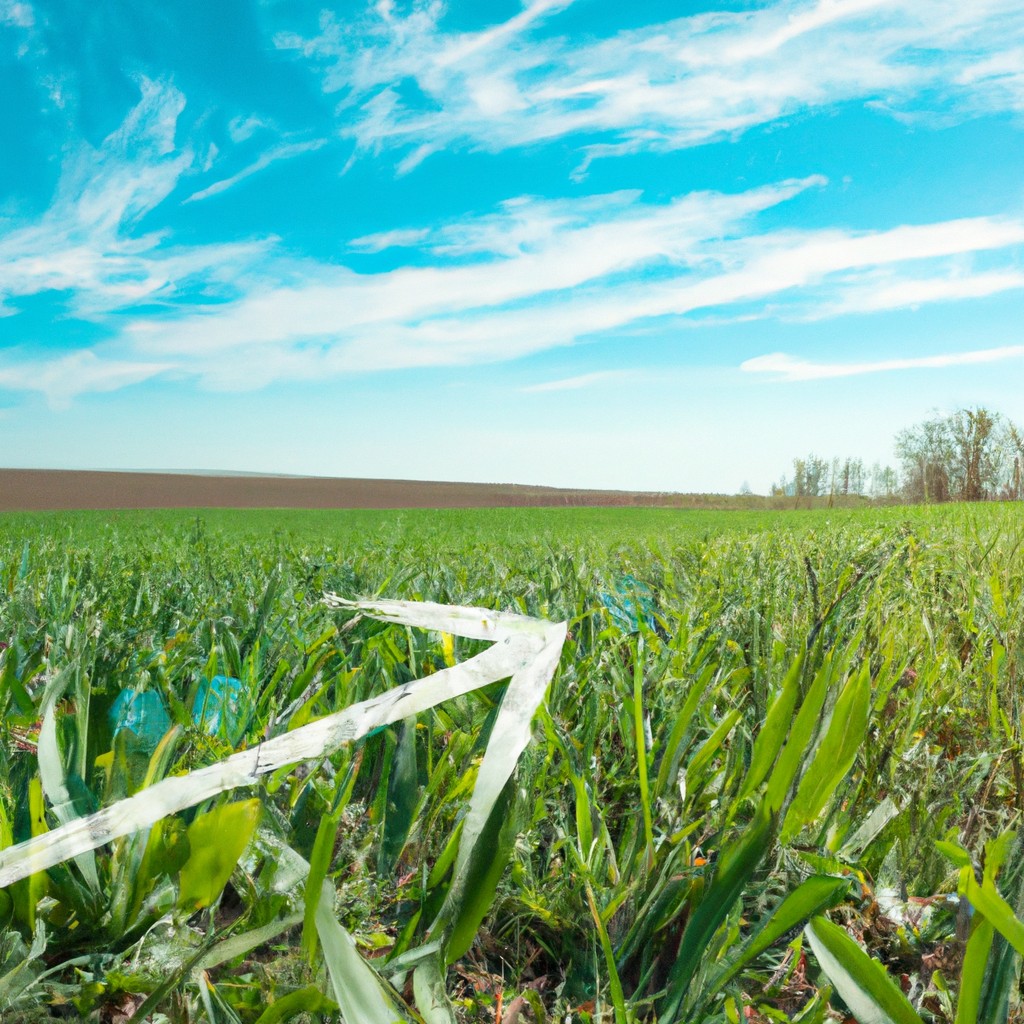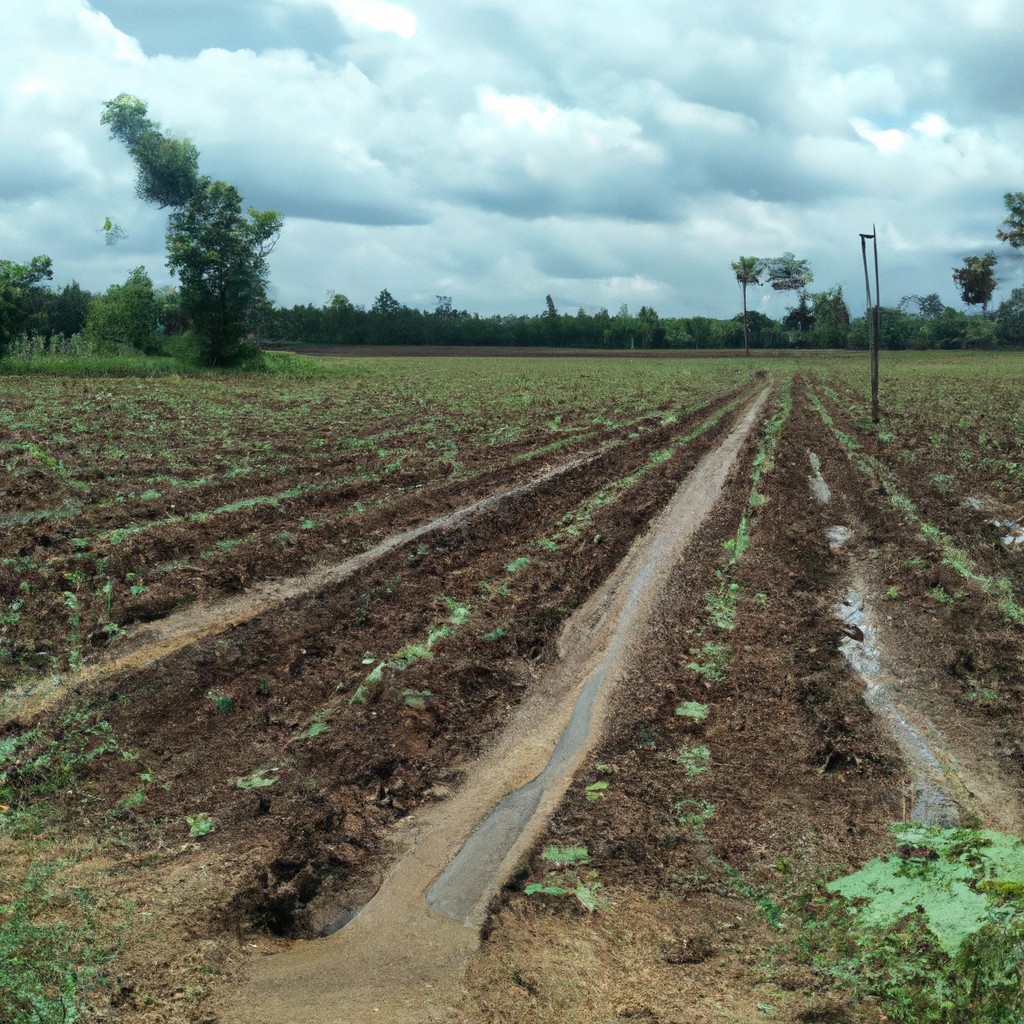Stay informed on the latest advancements and trends in sustainable and regenerative farming practices with this concise agriculture news update.
Look Inside:
Latest Agriculture Technologies

Advancements in agriculture have brought drones to the forefront, where they now play a pivotal role in monitoring crop health. These eye-in-the-sky farmers can detect stressed plants long before the human eye will spot trouble.
Satellites, too, have joined the farming team, serving as powerful allies for precision agriculture. By analyzing data from above, farmers get a bird’s eye view of their fields, allowing for smarter, resource-efficient crop management.
Crop sensors have revolutionized the way farmers manage their fertilization strategy. No more guesswork or one-size-fits-all approaches; now, plants ‘tell’ you when they’re hungry.
Robots haven’t just taken over factories, but are also stepping onto the farm. From weeding to harvesting, these machines offer a tireless workforce that streamlines operations.
The fusion of AI with farming suggests an agricultural revolution. By learning and adapting to patterns in farming data, AI aids in predicting optimal planting times and identifying potential pest issues before they become problems.
These breakthrough technologies represent the new backbone of modern farming, ensuring food production can keep pace with a growing global population while minimizing environmental impact.
Impact of Climate Change On Crop Yields
Soaring temperatures and erratic rainfall patterns are throwing a wrench in the works for farmers globally. Imagine trying to plan your growing season but Mother Nature keeps changing the rules of the game! These climate irregularities often lead to reduced harvests and lower quality produce. It’s like baking a cake, but the oven temp keeps flipping from ‘broil’ to ‘warm’. The end product? Not exactly prize-winning.
Now picture crops that normally enjoy a chill, suddenly sweltering before they even have a chance to hit their stride. Heat stress can cause plants to age faster than a teenager in a tanning bed, hindering growth and slashing yields. Conversely, unexpected cold snaps aren’t just an inconvenience; they’re like uninvited dinner guests for crops that can’t just throw on a sweater.
Floods and droughts, two sides of the same unwelcome coin, can wash away or dry out the dreams of abundant harvests. Think of soil moisture as the Goldilocks zone for plants — too much or too little, and it’s a no-go. Even pests and diseases are RSVPing ‘yes’ to the climate chaos party, further complicating the already intricate dance of agriculture.
To farmers, this is more than a weather forecast gone awry; it’s about adapting to a tango of uncertainty with resilience and innovation. They’re constantly rejigging the playbook, integrating resistant crop varieties, and timing planting cycles with the precision of a Swiss watch, all to outsmart a climate that’s acting like a fickle friend.
So while sipping that morning coffee or biting into a fresh apple, spare a thought for the farmers riding the climate rollercoaster to bring us nature’s bounty against ever-shifting odds.
Global Agriculture Market Trends
- Shifting Patterns in Consumer Demand:
- Consumers worldwide are influencing the market by leaning heavily toward organic and plant-based foods. This pivot isn’t just about health; it’s also a conversation starter on environmental ethics.
- Integration of Tech in Farm to Fork Journey:
- The buzz is all about precision agriculture, where drones and AI are more than fancy toys – they’re partners in making farms smarter. These high-tech helpers assist in monitoring crops, conserving resources, and reducing waste from seeding to harvest.
- Rise of Alternative Proteins:
- Forget the steak, why not a juicy lab-grown burger instead? Alternative proteins are cooking up a storm, doing the tango with sustainability goals by offering a new twist on what lands on our plates without the heavy environmental toll.
- Trade Wars and Policies Shaping Trade:
- Border skirmishes don’t just happen in the movies; they play out in trade policies too. The agriculture sector braces as policy changes and trade disputes shuffle the deck on global market access and commodity prices.
- Urban Agriculture Claiming Space:
- City rooftops and old warehouses aren’t desolate space anymore; they’re getting a green makeover. Urban farming is pushing boundaries and redefining what local food means, making city living a bit more leafy and flavorful.
Sustainable Farming Practices and Organic Growth
Farmers worldwide are turning over a new leaf by embracing methods that are kind to the earth and our future meals. Sustainable practices are not just a passing fad; they are strategies that hug the environment while giving it a friendly pat on the back.
First off, crop rotation is a big win. Think of it as a game of musical chairs for plants, where changing up what’s grown where keeps the soil from getting bored and nutrients remain plentiful. It’s like keeping your soil’s diet balanced so it stays sprightly.
Then there’s cover cropping, akin to tucking your soil into a cozy bed, protecting it from erosion and weeds. These superhero crops are a soil’s best ally, conserving water and befriending beneficial critters.
Organic growth is also a player on the field—no synthetic pesticides or fertilizers here. Think of natural solutions as the farm’s homemade remedy to keep crops healthy—like grandma’s soup for plants.
Minimal tillage is another technique on the roster. Less churning of the soil means more carbon stays put, and the local underground community of beneficial microbes gets to throw a house party, uninterrupted.
Lastly, integrated pest management is the chess game against unwanted insects, using biological warfare instead of chemical warfare. It’s about working with nature to outsmart the pests, not overpower them.
Switching to these methods is a bit like hitting the refresh button on farming – it rejuvenates the soil, conserves resources, and helps ensure that farming can continue for generations to come. It’s a commitment to long-term relationships over one-season stands.
Agriculture and Its Impact On Economic Growth
Agriculture is often seen as a cornerstone of economic stability. It lays the foundation for food security, which in turn fuels a nation’s workforce. When farmers thrive, they purchase more goods, creating a ripple effect in the surrounding economy. This sector’s growth is a boon to related industries, such as food processing and agricultural equipment manufacturing.
However, it’s not all about the bread and butter. Investments in agriculture can lead to better infrastructure, such as roads and irrigation systems, which benefit all. Moreover, successful agriculture sectors can be a fertile ground for innovation, sprouting advancements in biotechnology and sustainable practices that have wider applications.
On the global stage, agriculture drives trade. Countries that are breadbaskets of certain commodities often wield significant influence in international markets. As a result, their economic health influences global food prices and availability, making agriculture a key player in the global economic ecosystem.
Finally, let’s not forget – when agriculture prospers, it sows the seeds for overall economic diversity. This comes from the strength of rural economies, which then lessens the heavy reliance on urban-centric industries. In essence, when the fields flourish, so does the economy.




